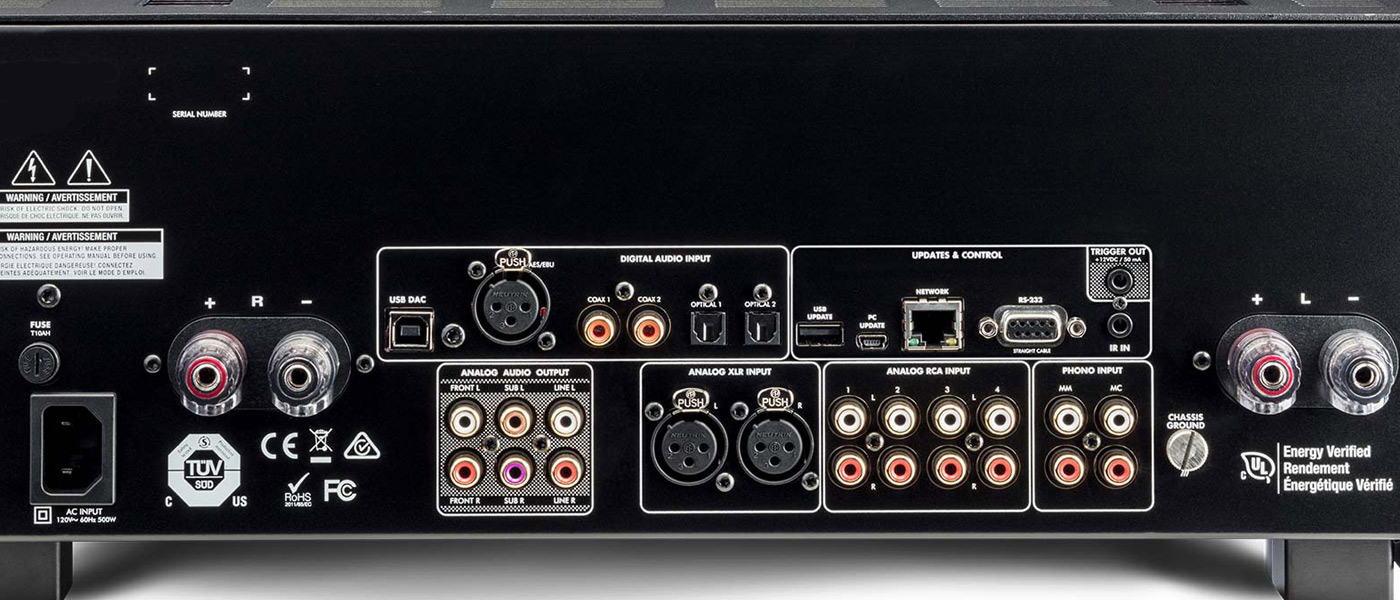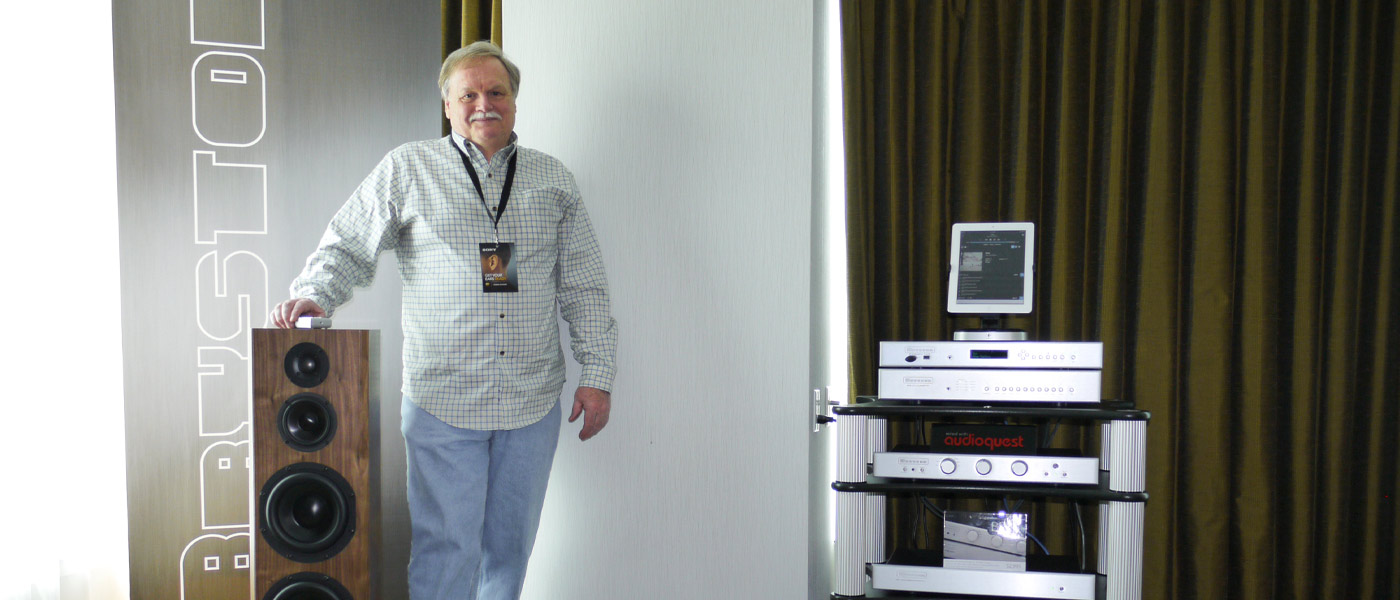
The new owners are not some obscure investment capital firm or some Silicon Valley dilettantes looking for a new pastime. No, the new co-owners of Bryston consist of long-time VP James Tanner and fellow Canadian audio company Colquhoun Audio (parent company of Axiom Audio). From the outside looking in, this seems like a very natural and best-case scenario, if you will, for such a long-running and deeply loved brand like Bryston, particularly after the recent passing of Brian Russell and the retirement announcement of Chris Russell (brothers, co-founders and President and CEO respectively). Bryston and Axiom have had a working relationship for some time now through the development of Bryston’s loudspeaker line, so a broadening of the partnership seems only apropos.
Secrets Sponsor
I had an opportunity to speak with James Tanner, freshly minted as Bryston’s new CEO, by telephone and we discussed a few matters on where the company currently is and where he sees it going.
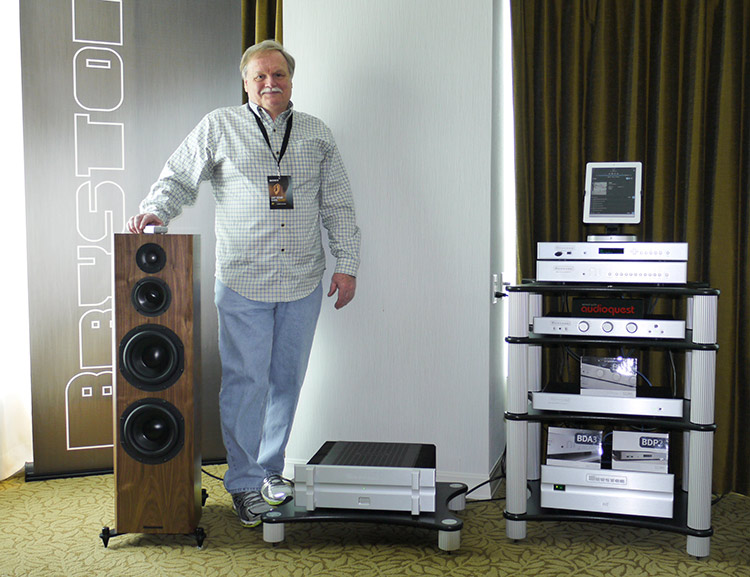
CL: James, firstly congratulations on the purchase and your new position as CEO of Bryston.
JT: Thank you, Carlo. You know everyone seems to be congratulating me but it’s basically like that old saying; “How do you make a small fortune in the audio business?”
CL: Well, how do you?
JT: You start out with a big one!
CL: (Laughter) So you mean to say this one of those “Be careful what you wish for moments?”
JT: (Chuckling) Very much so! The pressure is on.
CL: Should we start with a brief history or background on how the current situation came about?
JT: Sure. So, the gentleman that I’m in partnership with, Ian Colquhoun of Colquhoun Audio, I met him some time ago at the National Research Council in Ottawa. We were there doing testing on amplifiers and he was there doing speaker testing and that’s where we first got to know each other. Now Bryston is located in Peterborough Ontario, a little north of Toronto, and Colquhoun Audio has their manufacturing facilities about a couple hours’ drive north of us and they have huge capabilities for loudspeaker design and production. They’ve even got their own anechoic chamber, which is the same size as the one at the NRC. So, to make a long story short, about eight years ago I went to Ian and asked him to build me a custom set of reference speakers and through that experience, we ended up creating a Bryston line of loudspeakers. You yourself have had a chance to hear them at shows and you even did a review of the Active Middle T speakers if I’m not mistaken.
CL: Yes. They were fantastic! I very much enjoyed my time with those.
JT: Thank you. So that experience just sort of reinforced the relationship and then over that eight-year period we’ve been chatting about the idea of possibly merging the companies. Now at this point, it was Brian Russell, Chris Russell and I that owned Bryston, and with the recent passing of Brian, Chris felt that it was time that he thought about possibly retiring and spending his time on some other things. So I proposed the idea to Ian of us merging if you will, and the two of us becoming the co-owners of Bryston. He agreed and I think, all told, it took about a year for us to get from the serious discussion stage to signing the paperwork and making it official.
CL: Well, all told, given Bryston and Axiom’s close working relationship with the development of Bryston’s speaker line, the arrangement seems like a very natural progression and a good fit for both companies.
JT: Obviously the partnership was there through the close working relationship, and in general it just seems like we have a similar culture and a very similar passion for what we were doing.
CL: Will Chris Russell still be involved with Bryston from a consulting standpoint?
JT: Chris will still be involved as a consultant from the engineering side of things. Chris has a very analytical mind. He is very good at being able to sit down and look at a bunch of things and then say, “Okay, let’s go in this direction because it makes the most sense.” So, he’ll still be involved at that level for sure.
CL: So, in a general sense, now that the sale is complete, what does the future hold for Bryston, and how does the merger play into that?
JT: A major benefit from the partnership can be explained like this. Axiom has the facilities to do all their own machining, so they machine their own drivers and everything else they need in-house. They have made a huge investment in the machinery that can actually produce parts. The problem that most of us high-end audio companies have at our level is that we’re not so much manufacturers. We’re more designers and assemblers. I mean we design the product but then we buy the transformers, we buy the circuit boards, we buy the metalwork, and then we put it all together and make sure it meets the design targets. So, through this merger, what we’re doing is we’re investing in insertion machines, investing in metal bending machines, and so on. And now, we’re going to end up being much more of a manufacturer for our own products than we were before with the help of the knowledge base that Axiom has.
CL: So, in fact, Bryston will become more independent and self-sufficient?
JT: Yes. We’ll be moving upwards as opposed to sideways because of this.
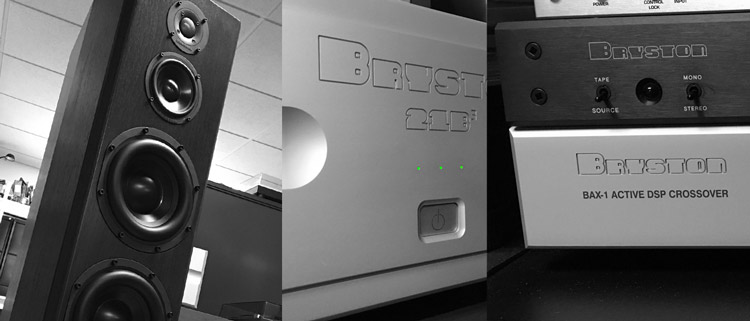
CL: Is there any concern about how much of each brand bleeds into the other? How do you share resources and knowledge to develop and improve each brand’s product but still keep things clear and distinct?
JT: Well there was some initial concern that, because Axiom is a direct-to-the-consumer brand and it’s considered to be a more value-oriented proposition, would it water down Bryston’s brand? And that was based solely on perception versus any real fact because as you know these days, perception is truth. Axiom’s product is by no means less innovative or of lesser quality than ours; they simply have a different design methodology and a different distribution model, and that allows them to target a different customer. We want to make it really clear to people that Bryston is Bryston and continues to be dedicated to the brick-and-mortar, retail sales channel and that is not going to be affected by Axiom’s ability to sell directly to the consumer.
In terms of product, there are significant enough differences in the way each brand designs and builds their product, which will remain in place, so that we can keep the obvious differentiation between the two brands. From a Bryston perspective, probably our biggest challenge is how do we get people into the brand at a reasonable price point?
CL: Frankly speaking, as a long time Bryston owner, that is probably the biggest issue that I’ve heard from people who were interested in the brand. Price has gotten to be out of reach for many.
JT: Historically we’ve always had a good value-for-the-money image. Especially when you compare how our products perform against some of the more astronomically priced stuff out there. But I agree with you, we have gotten to the outside edge of that curve lately. What we are hoping is that once we can bring all of the manufacturing completely in-house, we’ll be able to pass those cost savings on to the customer. Honestly, when it comes to pricing, what we don’t do is ask ourselves, “What will the market bear?” for a Bryston amplifier, let’s say. We build it for what it costs us, then add 30 percent, and away we go. Bringing all of the manufacturing in-house will net us some significant efficiencies and cost savings that should be reflected in the future.
Also, from a product standpoint, do we think about introducing a more approachable integrated amp model? Wireless speakers have become very popular, do we come up with our spin on that combined with a high-quality little preamp? Having both the speaker and the front-end side of the equation available to us, it wouldn’t be at all difficult to design and build a nice, very high-quality little starter system.
CL: Speaking of image, I’ve always seen Bryston as that rock-solid, dependable and honest choice when it comes to audio. Someone knows exactly what they are getting. How do you see Bryston’s current image?
JT: Well, we’ve never really had the sort of cachet that some other audio brands out there have. You know our stuff is designed to approach the theoretical limits of what can be measured in terms of the noise floor, signal-to-noise ratio, and all that. Very few other manufacturers seriously do the same. It’s fair to say, both from reviews and customer feedback, that our amplifiers and preamplifiers are second-to-none and we’ve been getting great press on our digital stuff too. So while Bryston hasn’t historically had that “gotta have it” sort of pull, it’s been slowly changing over the last 7-10 years mainly because of our reputation. And our aesthetics have come a long way too. I used to joke with Brian and Chris, “You know, no one buys a Rolex just to tell the time!”
CL: With the dealers being such an important part of Bryston’s success, what things will you be doing to further support them?
JT: We’re working on a few things. For example, for those folks who just won’t go to a store, we’ve introduced a shopping feature on our website whereby clicking the “Online Shopping” tab, you are asked for your location, contact information, and your system configuration. That information is sent to the nearest authorized dealer who makes contact with the customer to advise them and hopefully complete a sale. Over the last two months our dealers have had over 600 sales inquiries through this, and they like it because it helps us to support them by directing a customer to them they might not otherwise have had. Another thing is that we’re going to be hiring some additional support staff that will be focused on attending to customer issues within a very short period of time. A “Quick-Response” team if you will.
And I should also mention that we are looking at increasing our sales force in the US to give Gary Dayton a bit more support. All this combined with the advent of easy video calls with Zoom and Skype should help us at the factory be much more responsive with both our dealers and our customers.
CL: What about for potential customers that may not necessarily be near an authorized Bryston dealer? How do you serve them without resorting to a direct-to-consumer model?
JT: There are a couple of ideas that we are working on to address that particular situation, but I can’t really talk about them at the moment.
CL: The COVID situation seems to have affected several audio manufacturers that I’ve spoken to in unexpected ways. Where most thought that it would be an awful sales year with the absence of audio shows, they have actually seen significantly increased sales that they weren’t expecting. Has Bryston experienced the same thing?
JT: This has been absolutely true for us too. We are introducing a new preamp called the BR-20 shortly, in fact, we’re starting to build them now, and we are already 95 units back-ordered. And that’s on a flagship audio product! With folks being stuck at home and either not being able to travel or spend those discretionary dollars as they had initially planned, many have decided to spend some of that money on a new stereo or a new home theater. So, we’ve certainly been a bit of a beneficiary on that count. If anything, the biggest issue we’re running into because of COVID is parts supply and we’re certainly not alone with that problem.
CL: There’s a lot of talk about resuming audio shows. The tail end of this year looks like it might be filled with a few shows looking to attract exhibitors and attendees to come. Has Bryston committed to anything as of yet?
JT: We’ve committed to one show in Chicago coming up in June (CanJam Chicago) and we are in talks with the folks running the Toronto and Montreal audio shows about attending if the situation allows them to actually put on their shows. I’ve heard a lot of industry people openly ask if we even need shows anymore but I think we do. I love attending the audio shows and meeting our customers in person. It’s grass-roots stuff for me.
CL: Well audio is all about the experience, right? Not only how something sounds but how it looks and feels, and you need to do that in person.
JT: Exactly. And in my case, I really enjoy just talking to the average person and finding out what equipment they are using, what they like and dislike, what is it about our stuff that appeals to them, and if they have questions or are customers who have issues. It’s a part of what we do and it re-enforces our brand.
CL: Now, out of curiosity, is Bryston still in the professional audio market? Growing up, a lot of my friends were in bands and eventually got into music production and they were always fans of Bryston pro gear.
JT: Well, we still are in the pro audio market but mainly when it comes to studio amplification. If an amplifier is going to stay put in a studio installation, then we still have some interest in the pro world. For touring, the trend has changed to lighter Class-D amplifiers because they can put out a ton of power and are easier to transport from place to place. No one wants to schlep around class A/B amplifiers with huge power supplies on multiple racks. These days for touring its light Class-D amps in two rack spaces with thousands of watts per side.
CL: Where do you see Bryston going in the realm of home theater processors? For the SP4 you had partnered with Storm Audio, correct?
JT: We have sold about 150 of the SP4 processor. The original plan was to have us do some of the guts ourselves, the DAC section in particular, and an analog bypass but that ended up changing. We ended up using the same processor built by Storm’s French OEM and ours just had a different faceplate and software. It’s interesting that you mention that because I’ve been talking with Storm Audio recently about the possibility of us manufacturing a version of their processor in-house, our way. So with this new merger in place, we could conceivably ask Storm for the rights to build the processor in-house in Canada, from the ground up with our modifications, and pay them a royalty per unit. The only thing we would need from them is the software.
CL: Now that sounds like a very compelling idea!
JT: Yes, it would be. And from Storm’s standpoint, they might see a benefit of some manufacturing capability in North America as well. That being said, we continue to sell the SP3 processor to those who don’t need more than 5.1 channels, Dolby ATMOS, or room correction. It’s a great sounding piece and there is still demand for it from the more audiophile minded home theater folks.
CL: Would there be room correction in any new processor?
JT: Well, we’d have to see because that is the conventional wisdom and we’d be leaning against the wind because, as a rule, we don’t believe in room correction here. Correcting for room anomalies below say 200 to 300 Hz is one thing and it is very helpful when done properly with good PEQ. But if you are of the NRC/Floyd Toole speaker mindset and you’ve spent a bunch of time investing in speakers with good smooth on and off-axis response (which will perform better in most normal rooms) why would you want to mess up that response with room correction? It is the same sort of thing as MQA. When it first came out, people were telling us that we needed to include it in our DACs. No, we don’t. We’ve looked at it and it doesn’t make sense!
CL: That line of thinking would certainly put you at odds with most marketing departments!
JT: You know, I guess there comes a point where you have to decide, as a company, do you give the customer what they want, even though you know it’s wrong? Or do you stick to your guns and say no, we just aren’t going there.
CL: James, thank you so much for your time, and best of luck to you and everyone at Bryston for the future.
JT: Thank you, Carlo. It’s been a pleasure.
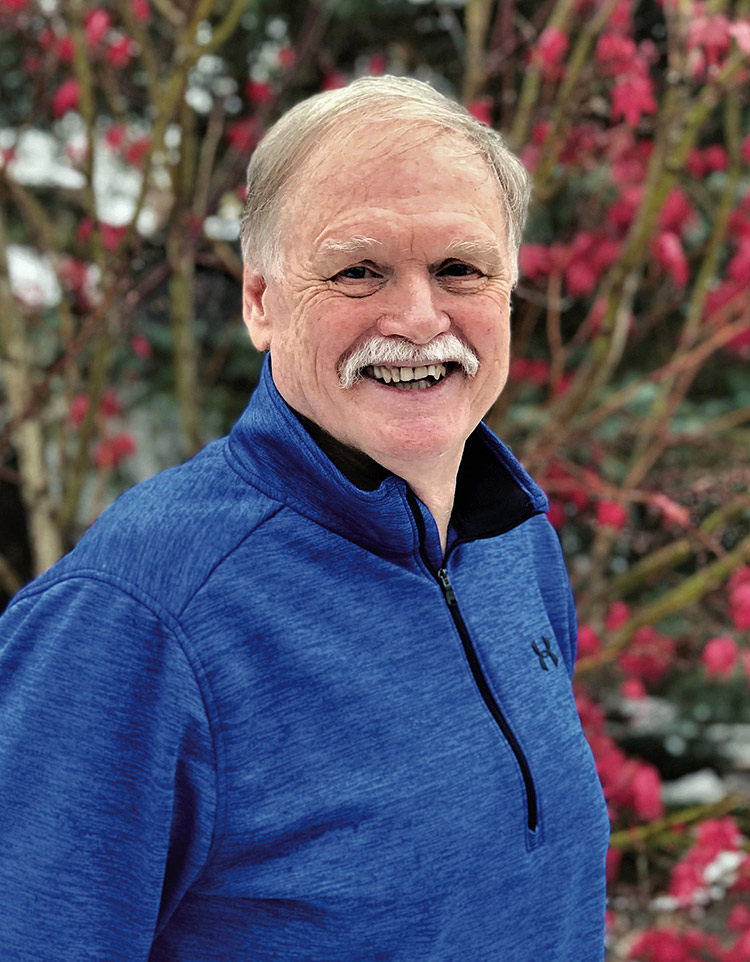
James Tanner has been passionate about great sound and high-performance audio as far back as memory serves, and was working as a firefighter and rescue truck captain when he was recruited by Chris Russell, a founding partner of Bryston LTD, to manage Canadian sales for the company beginning in 1978. Tanner was also a partner in Whitby Audio, a boutique retail operation offering premium audio products to clients in the community northeast of Toronto.
By the mid-1980s, Tanner’s responsibilities at Bryston expanded significantly and he was granted partner status, taking over the VP of marketing role while helping to drive new product development.
Tanner became more visible as the face of Bryston through participation in tradeshows including CES, CEDIA, and regional events throughout the US and Canada, as well as maintaining a consistent presence within online forums in more recent times. In the 1980s, Bryston supplied the NRC (National Research Council) with amplifiers for their audio testing laboratories, and Tanner met many innovators in the field including Floyd Toole and Ian Colquhoun.
Secrets Sponsor
Tanner went on to identify markets and lead product development for Bryston in new categories such as digital audio, loudspeakers, and home cinema processors. Tanner was recently recognized with the 2019 Lifetime Achievement Award by the Toronto Audiofest, acknowledging decades of dedication to the high-performance audio category. Early in his firefighting career, Tanner met the lovely Miss Fire Prevention, named Jacquelynn. James and Jacquelynn have celebrated over 40 years of marriage together, and he is the proudest Father and Poppa to his three Grandchildren.
Today, Tanner is partnered with Ian Colquhoun of Colquhoun Audio and acts as CEO of the Bryston brand. He has retained all of his passion for superb sound and continues to strive for the finest performance and reliability in manufacturing Bryston’s legendary Made in Canada products that are sold through over 150 dealers in North America and 60 countries worldwide.


